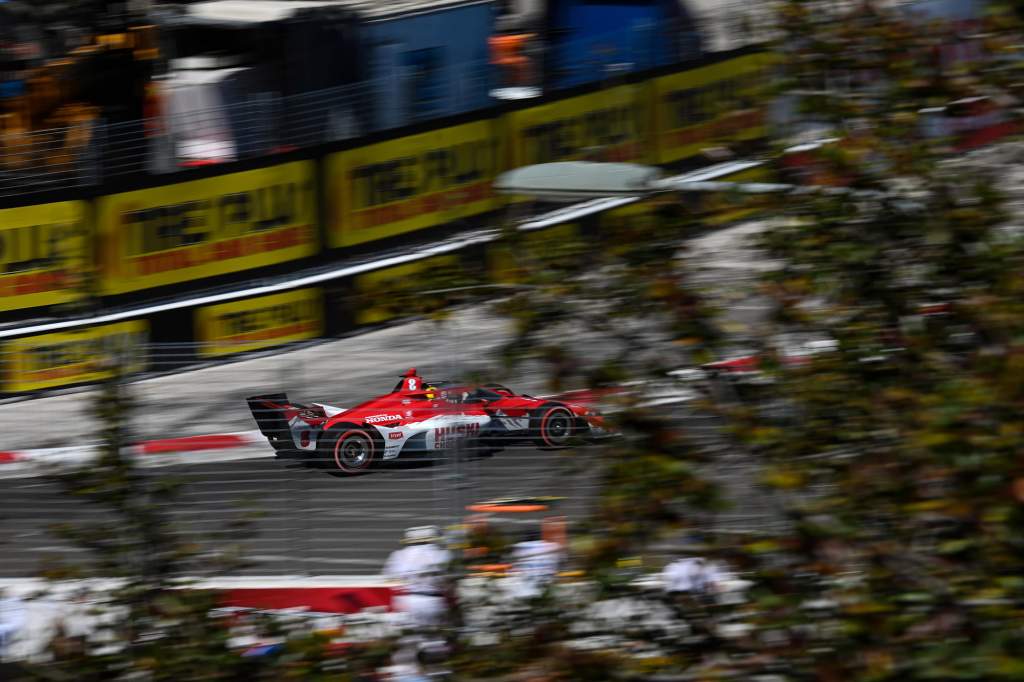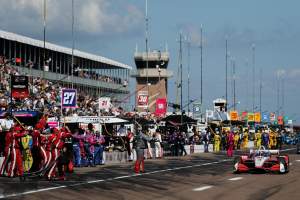Rarely does a driver get to celebrate over a ninth place, but that result in St Petersburg last Sunday capped off a bonkers weekend for ex-Formula 1 driver Marcus Ericsson, and was a genuine contender for his best IndyCar race performance yet.
You may remember his wins last year in Detroit – where he stole the victory from Will Power (whose car didn’t start after a late red flag), although Ericsson still had to hold off some hard chargers after that – and Nashville, where he went from having an airborne crash at the start to winning the race in spectacular fashion.
Basically, nothing comes easy for the endearing Swede in IndyCar, and St Petersburg last weekend was no different.
He had a phenomenal start to move up from eighth to fifth, he was one of the only drivers genuinely able to extract performance from the soft tyre late in a stint, then got sent to the back for a pitlane collision and finally he fought back from 25th to ninth.
“I think it’s definitely one of my best drives in IndyCar,” Ericsson told The Race following the weekend.
“It’s frustrating to come away with a P9 when you feel like you had a really good weekend and a really, really good race. But that’s how it works sometimes.
“We did a really good start, a really good first stint, I was handling those red tyres extremely well and was able to go faster when everyone else was falling off.
“The race was really going in the right direction for us at that point. And then the yellow came out which was badly timed for us because of the pace I was having at that point – it was still not a disaster – but obviously that pitlane penalty, I wouldn’t say it ruined our day but we definitely took a big hit off of that.
“Again, to be able to recover from being last and go all the way up to a top 10 finish, I think shows the kind of racecraft and race pace that we have as a team and I have as a driver.
“So yeah, it was definitely one of my better drives, I did some good overtakes, and then tyre management, fuel management and all that. And I think I showed that I can be right up there and fight up front this year.”
The starts in IndyCar are rolling and can be difficult for F1 drivers to adapt to, but Ericsson looked right at home on Sunday.
He hung on the outside picking off Simon Pagenaud and edging ahead of his row-mate and Ganassi team-mate Scott Dixon, before holding that outside line into Turn 2 where it becomes the inside, and that allowed him to push Romain Grosjean wide and steal fifth where he remained until he passed Rinus VeeKay on lap 18 of 100.
The caution for David Malukas’s crash on lap 27 couldn’t have come at a worse time for Ericsson. He had plenty of pace – despite being in traffic he was putting in similar times to the leader who was in clear air.
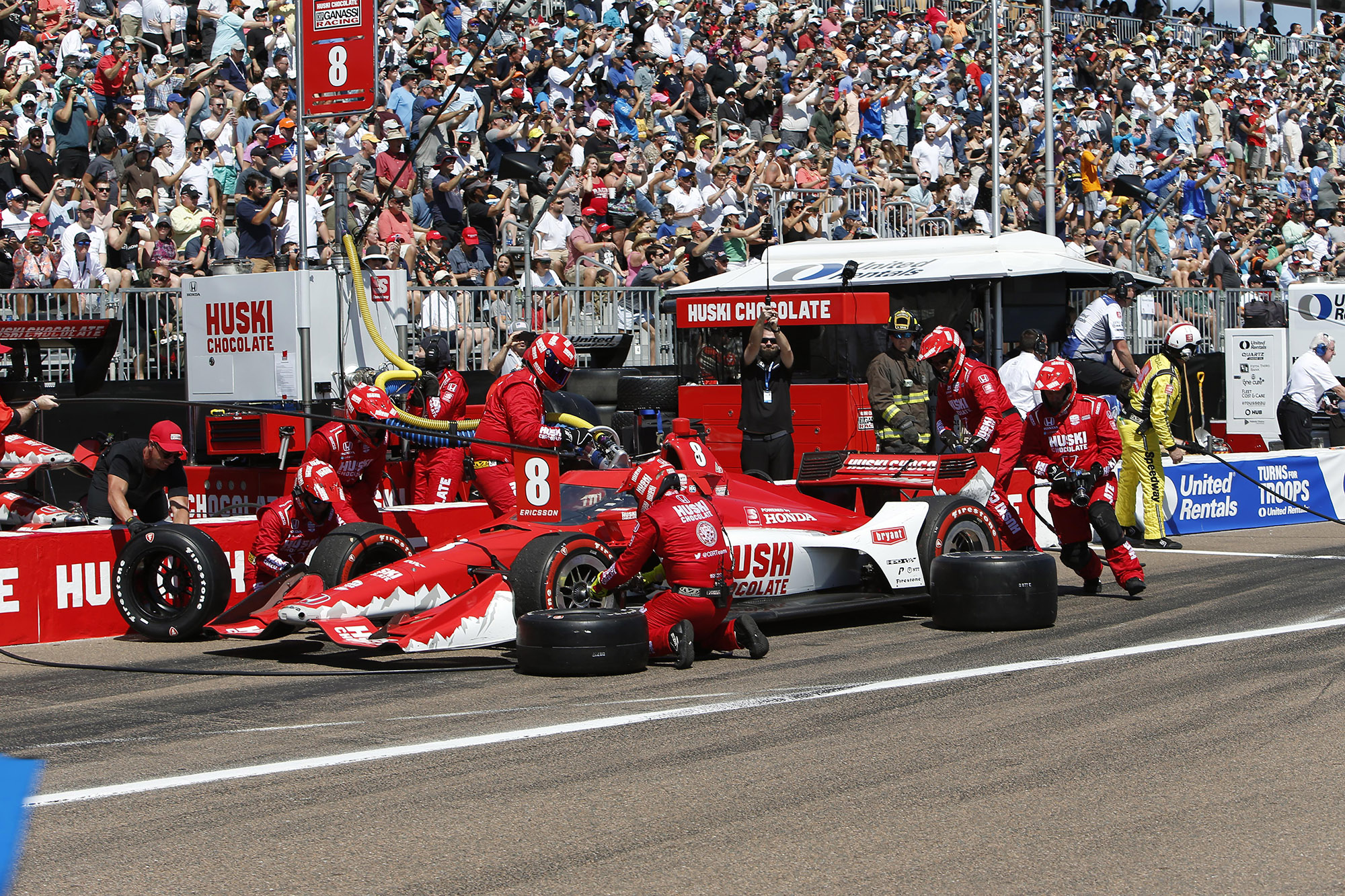
With the softer tyre most drivers started on degrading rapidly for many after 10 or so laps – VeeKay had fallen well back from Ericsson and did a lap five seconds slower before diving into the pits on lap 17 – it showed what a great job Ericsson had done.
“It’s been one of my biggest strengths for a while now,” Ericsson said of his tyre management.
“I learned a lot in F1 with those early tyres. That was one of my biggest strengths as well, to be able to stretch stints long and then have a good feel for how the tyre behaves.
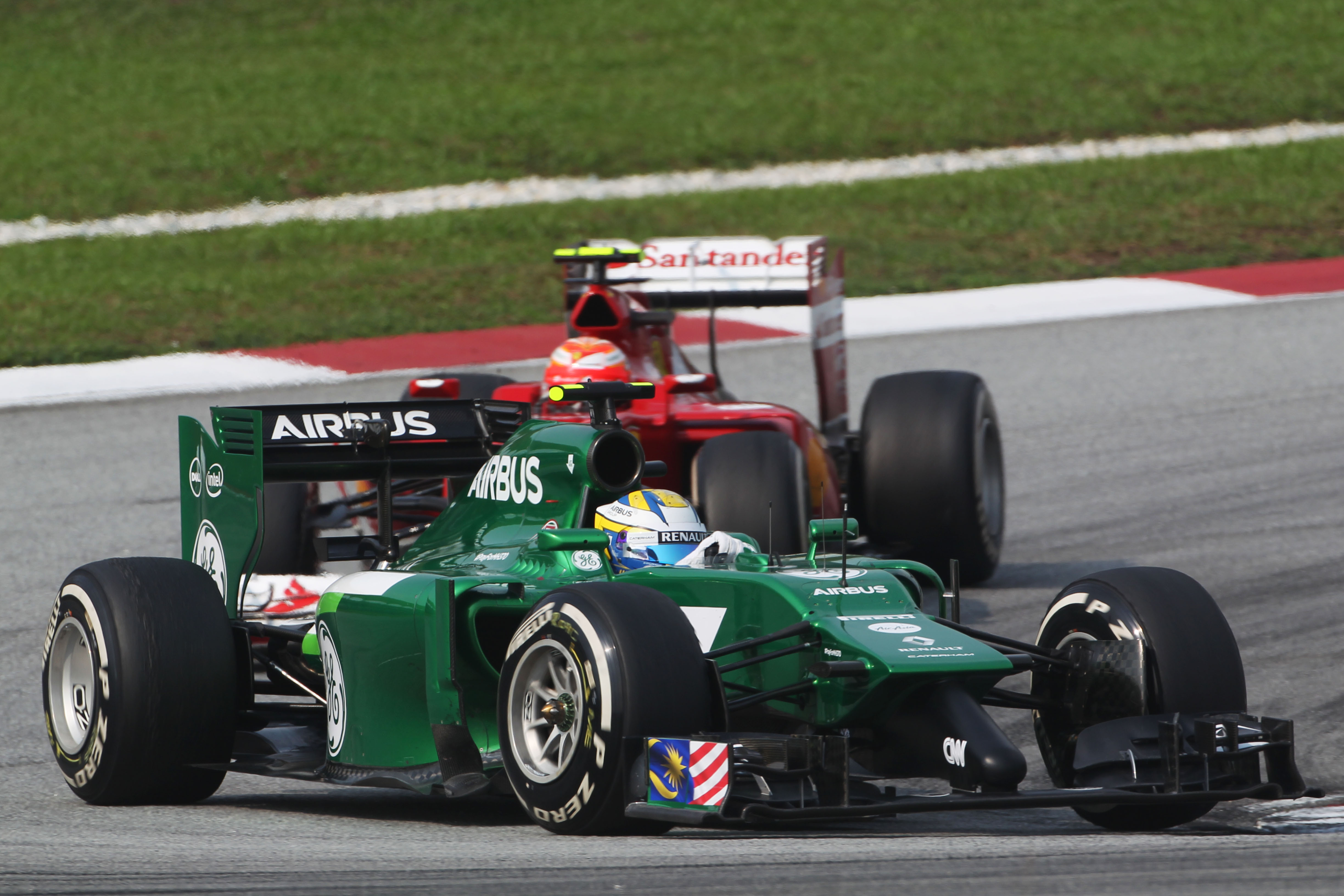
“We knew the red [soft tyre] stint was going to be critical, and it was going to be tough to do 30 laps on the red tyre which is what was needed to be able to do a two stopper. I think I managed that perfectly.
“The first sort of 15 laps I was just controlling the front and rear axle and being really careful and didn’t stress them at all and then just kept position.
“Then when everyone else started to struggle from lap 15 onwards I obviously started to pick up my pace every lap.
“I would have easily been able to go to lap 30 and just caught [Colton] Herta there just before the yellow came out [on lap 27].
“So the yellow was really unlucky for us because I think what without the yellow we would have been P3 after that first sequence or the first step. So yeah, that’s how it is sometimes.”
SANDWICHED!
Check this out as Marcus Ericsson, Graham Rahal, and Romain Grosjean get real close to each other on pit road. #INDYCAR
📺 : @nbc and @peacockTV
💻 : https://t.co/GvChvJgmhK pic.twitter.com/VyfiBZ165M— IndyCar on NBC (@IndyCaronNBC) February 27, 2022
In the pits Ericsson was pinged for an unsafe release after he clipped Graham Rahal’s car and went three-wide with Grosjean.
Ericsson reckons the penalty was harsh because IndyCar can give out smaller penalties and the punishment of being dropped from fourth to 25th didn’t fit the crime.
“I understand that in pitlane we need to keep everyone safe, it’s important,” he adds.
“But I think the situation is, it’s a yellow flag stop, it’s always busy in those situations. And the fact that Graham was deployed right behind us, he gets sent about the exact same time as I get sent.
“That’s what, for me, makes it a bit of a harsh penalty because I don’t really see what we can have done different.”
Luckily – if you remember Nashville – Ericsson is an expert at recovering from going to the back on street courses. He was on the optimal two stop strategy where many of his rivals were on a three, but he still made some good overtaking moves to work back into the top 10.
The key thing to take away from all of this is that Ericsson qualified in the top 10. Last year most of Ericsson’s stats aligned closely with eventual champion team-mate Alex Palou, but Ericsson’s average start was 12.19, almost five places lower than Palou.
Ultimately some people may choose to be worried by the fact that Ganassi spent a lot of the off-season working on its street course form but turned up struggling in St Pete.
But the alternate view is that it doesn’t matter, because it showed another key strength in being able to adjust on its set-up quickly to get results.
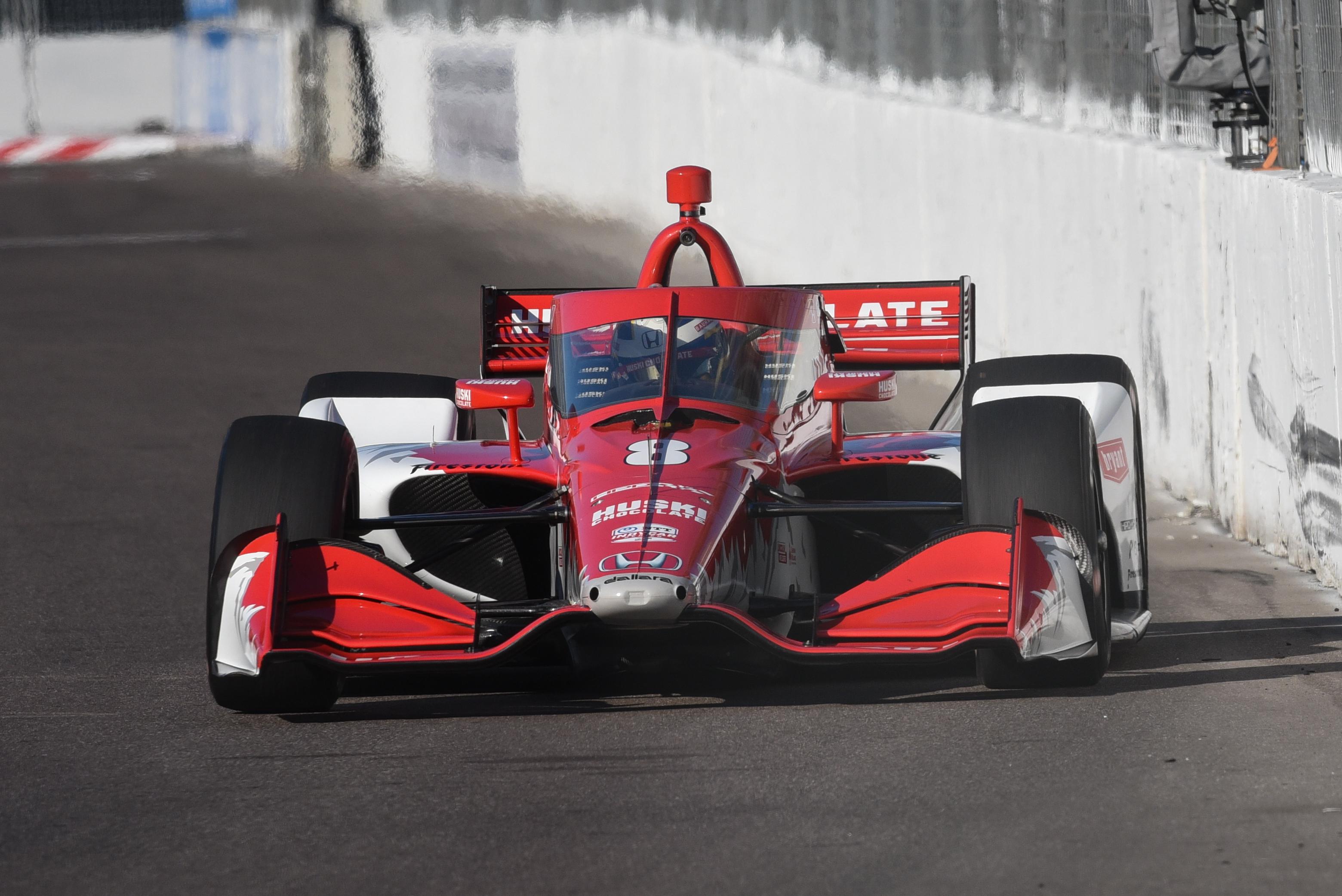
“We rolled off with the balance not really where we needed it, I think as a team,” added Ericsson.
“But at the same time, we recovered really well. We had a really good qualifying. I think it was my best street course qualifying of my IndyCar career. P8.
“That’s one of my goals this year, I need to qualify in the top eight or top 10 on average to be able to challenge for a championship.
“I think it comes down to all of the work we put in, in the off-season, especially me and my engineer Brad [Goldberg], we’ve been working very hard to analyse my driving style and understand when are we the strongest? What is the car doing then? And sort of try and find things in the set-up to help me get that feeling.
“The Sebring test we had a couple of weeks ago sort of confirmed that and we had a really good test there and then we sort of brought that into this weekend.
“I thought we were one of the strongest cars. and especially in the race obviously. It’s a lot of positives to take from that and it sort of shows that the hard work we’ve done in the off-season is paying off.”
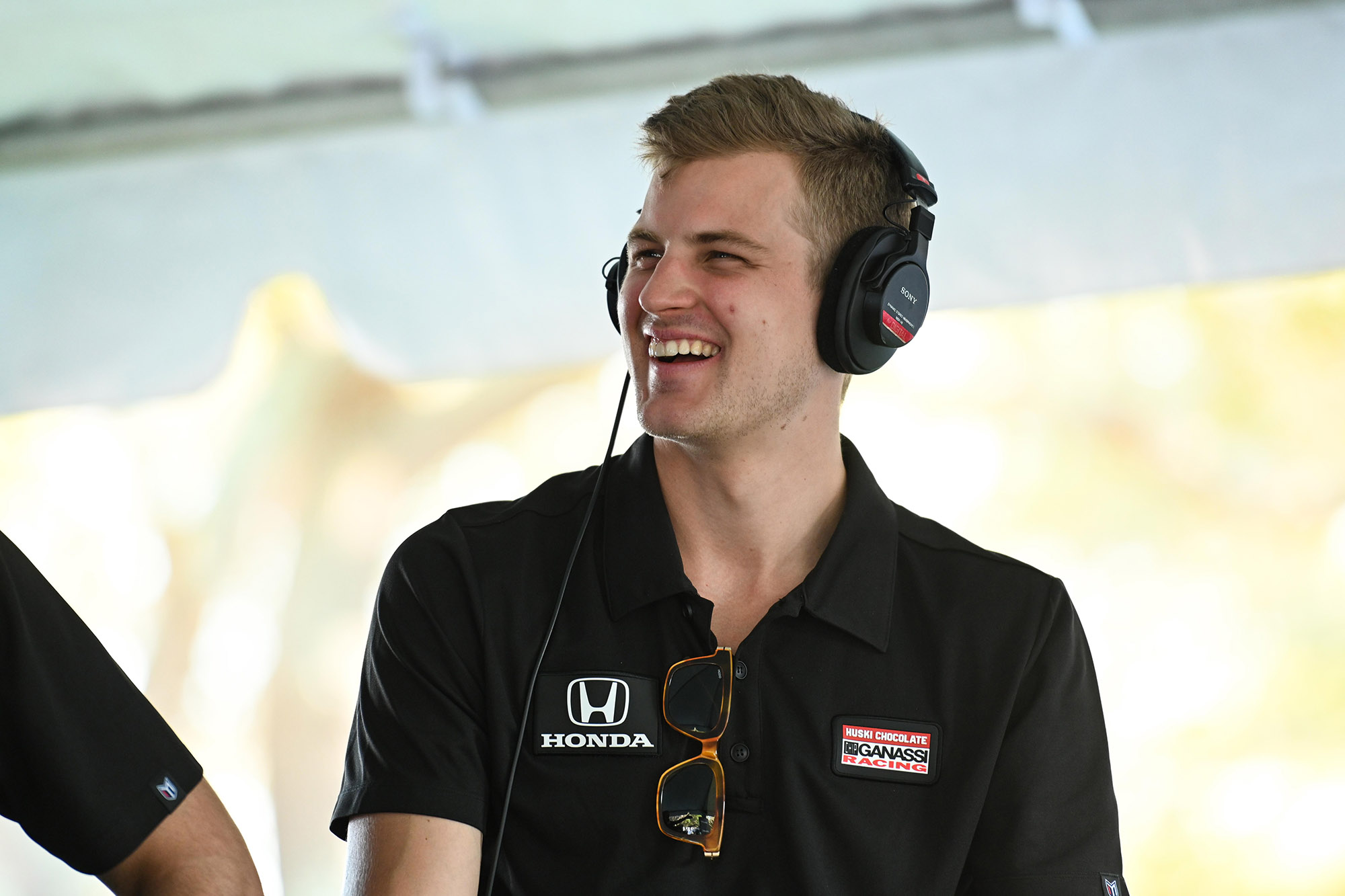
Basically, what this weekend boils down to is IndyCar throwing everything and the kitchen sink at Ericsson and his crew at the weekend. But even with that, he still scored a top 10 finish.
The opposition may sleep on Ericsson’s ninth place finish, but if he maintains this level of performance, we’ll be hearing a lot more from Ericsson through the year, and not just because of wild back-to-front races, even though they seem to be his speciality.


